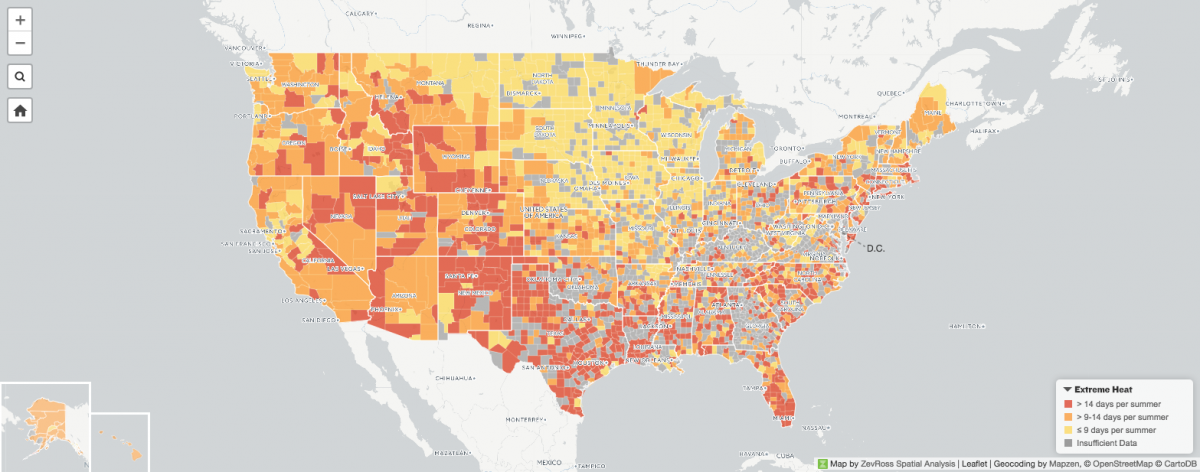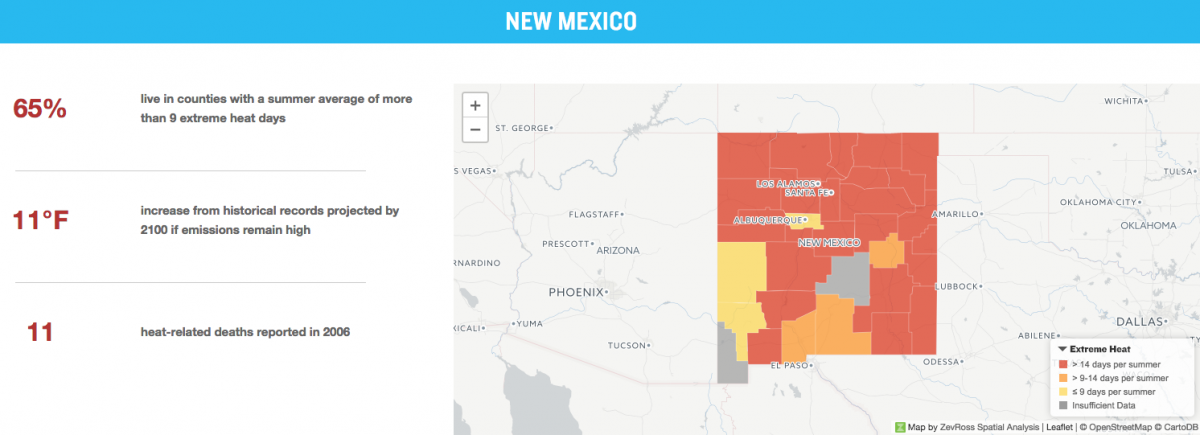Climate Change and Health: Extreme Heat
Across the country, climate change is making heat waves hotter and more frequent. If that isn't reason enough to sweat, consider the health impacts: As temperatures rise, so do the number of heat-related illnesses, emergency room visits, and deaths. Heat waves have been the top cause of U.S. weather fatalities, on average, over the past 30 years.
Explore the map by clicking on a state or clicking on the magnifying glass to type in your address. Areas with more than 9 days of extreme heat are living with more days of extreme heat than they did in the past, based on historical records.


Average temperatures in New Mexico, which have climbed nearly 2°F since the early 1900s, are expected to exceed historical records by about 11°F by the end of the century if high carbon pollution levels continue globally. NRDC’s analysis shows that in New Mexico, 28 counties already see an average of more than nine extreme summer heat days per year, with 25 of those counties averaging more than two weeks’ worth of extremely hot summer days. Climate change is fueling hotter summer days and increasing the intensity and frequency of heat waves, raising the risk of heatstroke and other heat-related illnesses. In New Mexico, heat stress causes an average of more than 200 emergency room visits and nearly 30 hospitalizations a year. A particularly deadly year was 2006, when 11 heat-related deaths were reported.
...
Our analysis shows that nearly 210 million Americans—or two-thirds of the population—live in counties vulnerable to health threats from unexpectedly high summer temperatures, which can cause heat exhaustion and heatstroke or worsen preexisting cardiovascular and respiratory conditions. An estimated 1,300 excess deaths occurred annually during extreme summer heat from 1975 to 2004, and more than 65,000 people end up in emergency rooms each summer with heat-related illnesses.
Older adults, young children, people with chronic illness, lower-income communities, some communities of color, and people who work or exercise outdoors are among the populations most vulnerable to heat-related health effects. City residents also face a heightened risk because of warmer temperatures in cities from the urban heat island effect, caused by the mostly paved surfaces that absorb and re-radiate heat and the lack of green spaces and tree cover in these areas.
Through August, 2017 has been the third-hottest year on record in the continental United States, with Florida, Georgia, North Carolina, and South Carolina all registering new highs for the first eight months of a year. The United States has warmed by about 1.5°F since 1895, with most of the rise occurring since 1970.
...


